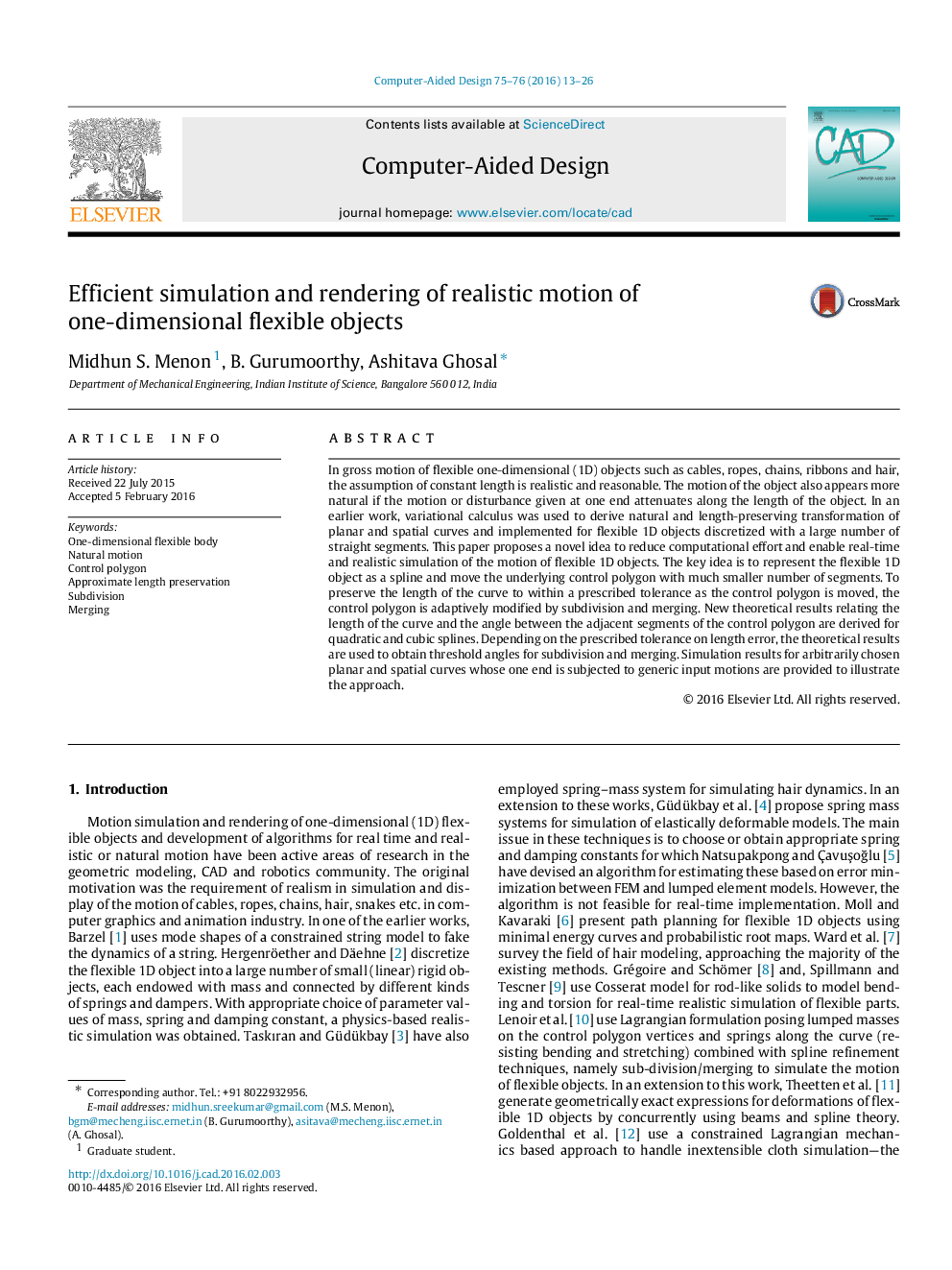| Article ID | Journal | Published Year | Pages | File Type |
|---|---|---|---|---|
| 439982 | Computer-Aided Design | 2016 | 14 Pages |
•Natural and realistic motion of flexible 1D objects.•Smoother and higher order continuity by use of splines.•Tractrix based motion applied to control polygon instead of the polyline.•Approximate length preservation by modifying control polygon.•Adaptive subdivision and merging to reduce computation effort.
In gross motion of flexible one-dimensional (1D) objects such as cables, ropes, chains, ribbons and hair, the assumption of constant length is realistic and reasonable. The motion of the object also appears more natural if the motion or disturbance given at one end attenuates along the length of the object. In an earlier work, variational calculus was used to derive natural and length-preserving transformation of planar and spatial curves and implemented for flexible 1D objects discretized with a large number of straight segments. This paper proposes a novel idea to reduce computational effort and enable real-time and realistic simulation of the motion of flexible 1D objects. The key idea is to represent the flexible 1D object as a spline and move the underlying control polygon with much smaller number of segments. To preserve the length of the curve to within a prescribed tolerance as the control polygon is moved, the control polygon is adaptively modified by subdivision and merging. New theoretical results relating the length of the curve and the angle between the adjacent segments of the control polygon are derived for quadratic and cubic splines. Depending on the prescribed tolerance on length error, the theoretical results are used to obtain threshold angles for subdivision and merging. Simulation results for arbitrarily chosen planar and spatial curves whose one end is subjected to generic input motions are provided to illustrate the approach.
